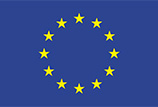
The Supporting Document for an oral customs declaration

How does Temporary Admission work?
The use of Temporary Admission (TA) is designed to be a paperless process with a voluntary option to document entries and exits using a Supporting Document, meaning that a qualifying aircraft can enter the EU without any customs contact or paper declarations. It is the EU Commission’s opinion that the bare act of crossing the outer EU border counts as a customs declaration. Over the years, it has become evident that a common misunderstanding persists: some operators believe the TA procedure is irrelevant or optional if an aircraft’s passengers or pilots reside outside the EU or hold non-EU passports. This is not the case, and such misconceptions have left many operators unprepared and at risk. Operators must understand the requirements and ensure TA compliance for all flights within the EU. Please be aware that full TA compliance includes correct handling of various limitations and situations, which is why a compliance test is fundamental before flying to the EU.
The function of the Supporting Document
The Supporting Document (SD) only acknowledges that the aircraft has arrived within the EU and is opting to fly under TA. Having the SD ready onboard or actively using it shows that the operator understands the basics of TA, which is helpful if approached by customs, but it does not grant the aircraft free circulation for a six-month period, nor does it approve TA compliance in advance. Again, no operator should fly to the EU unprepared and unable to explain and document why they are eligible to use the TA procedure. The SD does not have this function.
Download the full package (including instructions) published by the EU Commission on how to use the Supporting Document for an oral customs declaration concerning TA.
Download English version
Download other languages | Choose the pop-up menu “other languages.”
Download file: Annex 1 (Part 3) of 1
Why is documentation needed if Temporary Admission is supposed to be paperless?
The TA procedure is designed to allow qualifying aircraft to enter and exit the EU without direct customs contact, as the mere act of crossing the EU border is considered a customs declaration. However, this paperless concept often leads to a misunderstanding: that no documentation is needed to prove compliance. In practice, only the entry and exit are paperless. Operators must still continuously live up to the preconditions of TA, handle the limitations correctly, and be able to document these at any time, even when making only one stop in the EU. Correct documentation proving TA compliance is a make-or-break issue during customs ramp checks. The Supporting Document does not confirm compliance, but if used correctly, it can support the overall compliance documentation strategy. To learn more, please view our explainer video about the topic.
Be prepared to meet EU customs
Being ready for customs ramp checks should be seen parallel to how an operator prepares for an eventual SAFA ramp check. We experience that many pilots are not trained and prepared to handle the above issues convincingly, and thus fly without a ready-to-use portfolio to support the use of TA.
Operators must prioritize:
- ensuring that their aircraft operation and structure meet the basic preconditions,
- addressing all limitations thoroughly,
- understanding and managing all grey zone areas,
- conducting a compliance test to validate the above,
- carrying relevant paperwork onboard the aircraft to document the correct use of TA, and
- instructing the pilots so that they are prepared to handle a customs ramp check
Operators must then decide how to manage documentation:
- Option a: No preparation – handle situations as they arise (not recommended),
- Option b: Prepare documentation internally with own legal adviser,
- Option c: Engage OPMAS to perform a compliance test and generate the required documentation.
How OPMAS can help
Operators should always consider how to document TA compliance as well as handle and secure the known grey zone areas when using TA. The relevant documentation can be conditioned without help from OPMAS, but we will be happy to help and have years of experience with this process. We offer different TA solutions depending on the risk profile and typical flight pattern. Feel free to reach out for more details.
